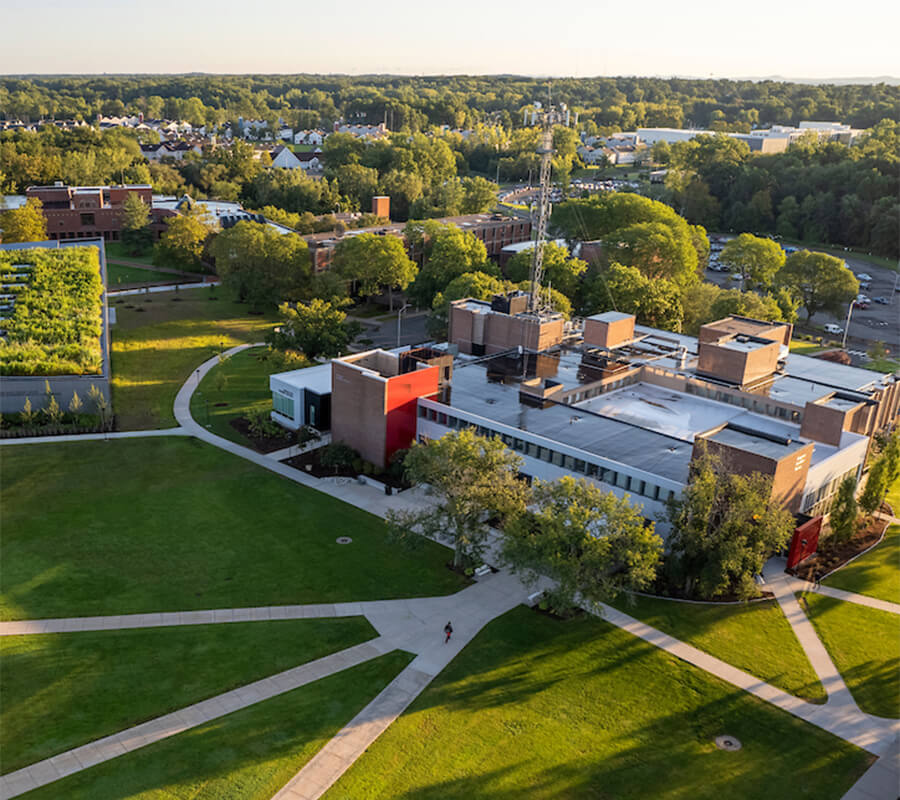UHart Start:
Our Vision
Our Vision
To ensure our entire University community works toward the success of our 5-year strategic action plan, we need to align on where we are and where we’re going.
Where we’re going: UHart 2025
What will the University of Hartford be like in 2025 when our Strategic Action Plan is fully realized?
- Students are persisting at UHart in record numbers as our Center for Student Success and many other integrated support systems for students mature and assert their positive influences.
- The Francis X. and Nancy Hursey Center for Advanced Engineering and Health Professions has transformed our academic facilities and experiences.
- The current Sports Center has been retrofitted and expanded into a more modern Recreation and Wellness center, where students actively engage in collegiate athletics, recreation, intramural and club sports, and other wellness activities.
- Campus classrooms, labs, and studios are outfitted with best-practice technology and furniture.
- Our community is inclusive, equitable, and diverse in every way.
- An aesthetically pleasing and accessible campus offers abundant common areas, enhanced landscaping, new signage, and access to natural spaces such as the river and pond.
- Behind the scenes, the campus is more environmentally sustainable, thanks to new programs and practices in lighting, electricity, and facility upgrades.
Undergraduate students experience a powerful integration of liberal learning and professional and artistic development. Drawing on an expanded University Interdisciplinary Studies curriculum, they find access and joy as they immerse themselves in all aspects and academic avenues of the University, developing intercultural knowledge and competence as a universal learning outcome. Graduates have undergone four years of career exploration, practice, and reflection. Academic major programs remain strong, but students have greater latitude in free electives, minors, or concentrations. Several new majors are now fully populated: nursing, exercise and sports science, occupational therapy, digital media and journalism, business analytics, robotics, and aerospace engineering. Our graduate programs focus on in-demand careers and foster cutting-edge skills and knowledge.
Faculty have found creative ways to fulfill their University personality and work. Their roles, as appropriate, have become more differentiated and flexible, allowing for focus on professional practice, scholarship and creativity, and University citizenship. We have become a more diverse faculty and staff, representative of our students, region, and world. A robust offering of diversity, equity, inclusion, and social justice programming is readily available to all, promoting a safe, welcoming, inclusive campus culture. Our classes remain small, with talented faculty that are committed to students and devoted to excellence.
We regularly earn high praise for our modern and successful curriculum, including the special advantage we provide students through exposure to the breadth of our schools and colleges. The exceptional academic, social, and career success of our students is an acknowledged result of outstanding advising, support, and mentoring within a modern and flexible curriculum.
Pride in the University is high due to the quality and accomplishments of our faculty and staff, its distinctive educational experience, our robust culture of wellness and success in athletics, the intellectual and career successes of our graduates, the beauty of our physical campus, the growing philanthropy of our friends, and the inclusive excellence that characterizes our diverse community.
We now have approximately 4,500 full-time undergraduate students and 2,000 graduate students. Graduate online education has grown by 25 percent from 2020 levels, and professional education and certificate programs have grown by at least 50 percent over the same time frame. Approximately 2,800 undergraduates and 200 graduate students live in University housing. First-year students have an admission yield of at least 15 percent. Enrollment from more academically prepared students has grown by 20 percent since 2020. First- to second-year retention is at 82 percent. Six-year graduation rates for all students is now 70 percent, with no distinct cohorts below 60 percent.
We offer degrees, certificates, and classes in several formats—at several professional locations and for several professional enterprises. Increased strategic partnerships with industry leaders have yielded valuable new scholarships and diverse internship opportunities. Career and graduate school placement for graduates is at least 90 percent.
The annual budget is balanced with an appropriate contingency. Our compensation is on par with our peer institutions and we expect regular increments and equity adjustments for faculty and staff.
Our University, favored with an outstanding faculty, powerful student-to-faculty ratio, exemplary full-time to part-time faculty ratios, and an abundant and excellent staff support network, can deliver on these promises.
We will build on our strengths with added financial stability and sustainability through a profitable business plan—with an adequate contingency—that returns resources for reinvestment.
We will deliver outstanding return on investment on student-driven enrollment revenue, including tuition, room, and board. We will attract students with in-demand academic programs that lead to career success, taught by exceptional faculty, set in a competitively appealing residential campus. We will draw students to unique experiences such as a curriculum that leverages the excellence of all of our schools, a learning-rich student life, and opportunities tied to the professional community. We will inspire ambassadors with a nurturing, safe, diverse, and gracious campus culture that prides itself on respect for all and unwavering ethical behavior. We will contribute to the economic, intellectual, and artistic development of our region, state, and world.
